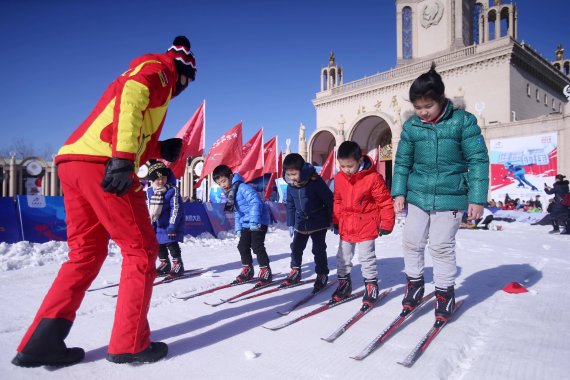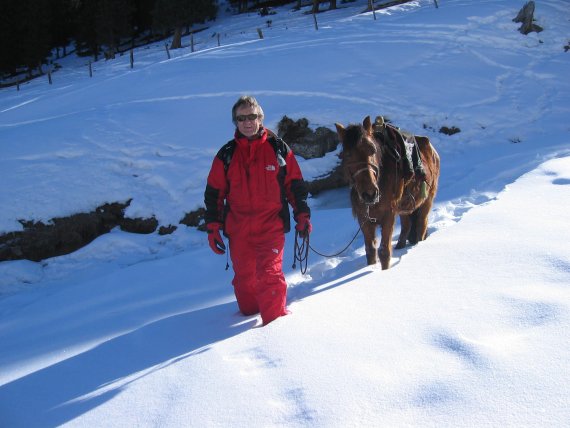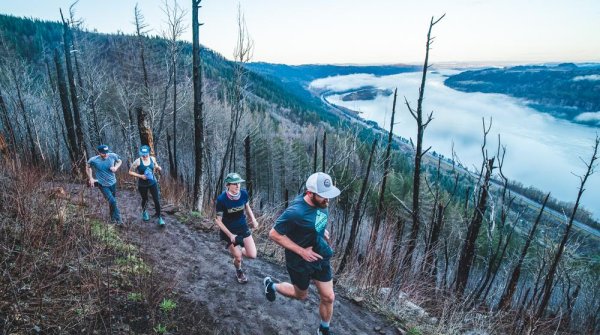
Some call Paul Bojarski a "mountain hunter", some call him just Mr. Paul. What’s undisputable, Bojarski is an absolute expert when it comes to winter sports in China. With more than 30 years of experience with his own ski resort development company MAS Bojarski has seen it all.
During the ISPO Beijing 2019 Bojarski sat down with ISPO.com and talked about the tricky business of developing ski resorts in China and what’s the big problem with the Winter Olympics in 2022.
ISPO.com: With your experience of over 30 years in the international ski business, how would describe the Chineses market in one sentence?
Paul Bojarski: Let’s put it that way. Skiing in China is on a development level like the industry in the late 50s or early 60s in Europe.
What brings you to that evaluation?
So, in the 60s there were only smaller resorts in Europa and most of the skiers were beginners. Also, it was mostly a sport for rich people, the middle class couldn’t afford to go skiing. This is exactly the situation in China right now.
So, how can we move on to the Seventies?
First of all, the salaries have to increase. This limitation determines the growth of the industry in China.
You've worked in Asia for more than three decades now, first for the ropeway transportation experts of POMA and then as independent agent with your own company MAS. What is its core business?
After exactly 20 years with POMA I quit and started MAS on the same day. With MAS we focus on the development of completely new ski resorts on untouched mountains. MAS gives the client the all inclusive service: We select the mountain, we negotiate with the government, we develop a business plan, we oversee construction and sometimes we even operate the resort for our clients.

What is the biggest challenge in these enormous projects like MAS is doing in China?
Every resort is a new adventure. When we start, we don’t know what will be the problem. But one thing is for sure - there will be plenty (laughs).
Please describe for our readers how you start planning a new ski resort…
First, I sit down with a map and search a promising mountain. Then we fly there and inspect the area. If it’s good, we talk to the local government and find out who is the owner. If we can get to an agreement with all involved parties we set up a contract and go on to find possible investors for the area.
So, MAS is bringing their offers to potential clients. Does it happen that potential investors are approaching MAS with their own ideas, too?
It happens quite often, but mostly the selected areas are just not good. You won’t make any profit there. We then explain them why they won’t be happy with their selection and propose something else close by. Almost always they do understand and follow our suggestion
Is it hard to convince a client to change the mountain?
It is not, if you know how to do it. With a lot of development-companies it works like that. The company gets the order to build a resort with international standards and they estimate it will cost amount X. Then the investor provides the money and they start building it. But there already is the biggest mistake made. There is no need for international standard ski resorts in China most of the time. What the investor needs is a resort that is profitable. So, it is up to us as the development company to tell the client how much investment makes sense to build a profitable resort.
Isn’t that very short-sighted of the construction companies?
It is indeed, but there are too many Yay-sayers in the business who are not interested in long term relationships. If some client comes to us with a wrong mountain or business plan we try to correct the proposal or we simply won’t take the job. A lot of times, this makes the client think. And then they listen. I explain what is the market for their mountain, how they make profit and what the costs will be. After a few hours, most of them understand and we are on a good way.
What was the most lunatic idea you ever heard in China?
Oh my, where to start? But one story really sticks out. 15 years ago, an investor – non-skier – came to us because he heard we are the only ones to make a resort profitable. So, he already had a ski resort based on two theories: Beginners tend to like flatter slopes and experienced skiers like long runs. With this information, he built a two-kilometer-long slope with just four percent incline. So, in the end, this slope was completely useless, you couldn’t even slide down because it was not steep enough.
When you started MAS back then, how did the ski-industry-landscape look like in China?
I came to China in 1986 for the first time, but there was nothing we would call a ski resort. The first real Chinese ski resort opened in January 2000, but it was mainly for professional athletes and members of the military. The first one for commercial use opened around 2001. In the beginning, very often farmers and their horses pulled the skiers up the hills.
Is there a common mistake that comes up when you work with Chinese investors?
Indeed. They always want to spend much more money than needed. Most of the times, the investment is four times less than they want to spend. With a lot of other construction companies the costs double in the end.
I get a strange feeling that you don’t like your competitors a ton…
That might be correct, but I’m just telling the truth. For 40 years, so many of their projects had to close again because the planning was faulty. They destroy the industry and squander the trust of investors.
n his White Book 2018, Benny Wu discovered that the big investments of former years are withdrawn in the ski resort business. On the other hand, indoor skiing is still booming. Does this make sense at all?
First, Benny Wu is right: Investors like Wanda are gone – and that is a good thing. Why? I’ll explain in a second. There are mainly two reasons for their absence: First the Olympics. All the big investors wanted to build an Olympic ski resort but nearly all of them were left out. So that opportunity is gone. Second reason, the financial possibilities aren’t that bright any more, even in China. So why is this good for the industry? Because big investors don’t necessarily care about being profitable.
Now let’s talk about indoor skiing. I’ll give you one example that will explain everything. I was the consultant for Wanda before they built the indoor ski resort in Harbin and I told them, that this is not a very good idea and the investment – if they still want to do it, is way too high. 20 people in the room agreed with me. And then they built it anyway because the big boss decided to. I think you get the point.
So, for the big companies the Olympic dream is gone. Who builds and finances the venues?
The government is doing it by itself. In the beginning, the government searched for a private investor to build the ski resorts. But in the end, the government selected a mountain, which is not suitable for commercial use. Why did this happen? Originally China wanted to get the Olympic Games in 2030 and not 2022. So, there were just three people responsible for the application of China for 2022 – all non skiers.
Nobody double checked which mountain they chose. But then everybody withdraws except for Beijing and Almaty and so China got the Winter Olympics 2022. That was a big surprise and the surprise got even bigger when everybody discovered which mountain they selected for the bid. China formed a think tank with me as the only foreigner and we had to find a solution in three days.
Sounds like fun. What was the outcome?
First I tried to suggest another mountain close by which would have been perfect but they refused because of political reasons. Now the slope will be built on the mountain they chose back then and it will be a so called “White Elephant” because regular skier can't use it. It is too steep, people would die on this run.
In conclusion, will there be any benefit for the Chinese ski industry thanks to the Olympics 2022?
Unfortunately, not. As I mentioned earlier. The number of skiers is correlated to the income of the people. The 2022 games are just a little too early, 2030 could have had an impact, but not the next winter games.







